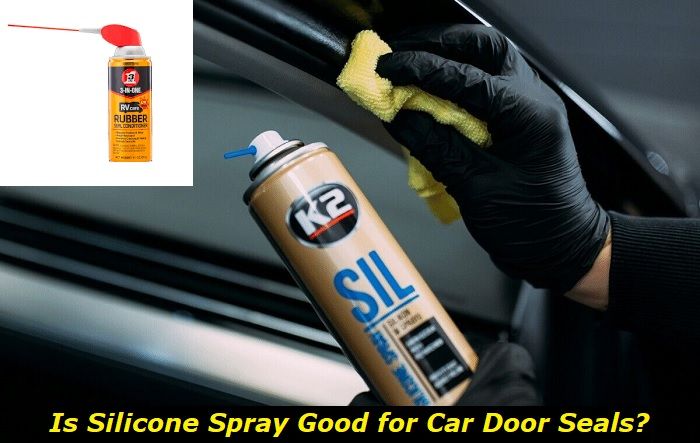Big-block V8s are icons of the past, and while the small-block V8s have won the war between the big blocks and the small blocks, big-block V8s still have a loyal and dedicated fan base who will swear by them! Of the iconic big-block V8s, Ford's classic 460 has garnered a lot of attention from many automotive enthusiasts - truckers and performance racers alike!
So in today's article, we're going to take a deeper look into the classic Ford 460 engine, we'll first take a look at its history, and then we'll move on to the life expectancy of the Ford 460 and it's everyday problems that you might face.
In short, though, this beast of an engine can easily last over 200 thousand miles and even 300 thousand miles, if you are willing to invest in more costlier repairs. Common problems for these engines include very poor fuel economy (obviously, as you might have imagined), frequent timing chain replacement, and warping exhaust manifolds.
.jpg)
Key features and my opinion about the engine
- Production years:1968-1997
- Average lifespan of 460:350,000-500,000 miles
- Fuel supply type:carburetor, later - port injection
- Power range:197-245 hp
- Fuel efficiency:awful
- Engine block material:cast-iron
- Engine reliability score:high
- The most common problems:various oil leaks, coolant leaks, overheating, fuel injection problems, enormous fuel consumption.
The Horsepower Wars of the 60's!
For the uneducated, the V8 engines that are in our muscle cars today are quite big in terms of displacement. However, the famous V8 engines such as the 5.0-liter Coyote engine in the Mustang or the classic 6.2-liter LS in the Camaro are actually what's known as the small-block engines, compared to the big block V8s (such as the Ford 460) of the olden days.
In the 1960s, US manufacturers were coming up with bigger and bigger V8 engines to one-up one another in a time period that is also known as the horsepower wars, or the muscle car wars. In order to have a higher horsepower than the engine of the competitor, manufacturers were coming up with engines in ludicrous sizes.
This period gave us the famous 400 cubic inch (6.6 liters) engine of the Pontiac GTO, the 440 cubic inch (7.2 liters) from Dodge that was made famous by the Blues Brothers, and many more! Ford's 460 (7.5 liters) V8 is also a relic of this era.
Ford's Lima (385) Line of Engines
Ford's 460 big block V8 engine is part of the engine family also known as the "Lima" engines. Another name for this line of engines is the 385. The name Lima comes from the assembly plant Ford used for these engines, in Lima, Ohio whereas the name 385 comes from the 3.85-inch crankshaft stroke.
The Lima or 385 line of engines had many types of displacement, the 460 was the first engine manufactured for the Lima line in 1968. After that, 370 cubic inch (6.1 liters) and 429 cubic inch (7.0 liter) versions were created in the same line as well. The Lima line had higher displacement engines compared to the 460, however, these engines were never put in production vehicles, but rather they were crate engines sold by Ford separately.
These crate engines had a displacement of 514 cubic inches (8.4 liters), and 572 (9.4 liters) - as you can see, even big-block V8s have a hierarchy between them, and can go as high as 9 liters!
Which Models Were The Ford 460 Used In?
The 460 engine was first used in the Lincoln Continental in 1968, and later it was used in the iconic Ford Thunderbird in 1972. The engine was also used in the Ford Mercury for a brief amount of time.
After the 1973 oil shock caused by OPEC's protesting the US for siding with Israel during the Yom Kippur War, manufacturers in the US started to prioritize fuel economy instead of horsepower. As such, the incredibly thirsty 460 was able to find a home in the engine bay of pickup trucks and vans, the F series and the E series respectively.
The engine was carbureted, initially, but Ford introduced fuel injection from 1988 onwards for it's F series trucks and E series vans. The engine was manufactured until 1997 when it was replaced with the Triton V10 that Ford used in its super-duty trucks and vans.
After its discontinuation, the engine gained a loyal following from both Ford and non-Ford fans alike, because of its high torque numbers and reliability. Next up, we will take a closer look at the downsides of the 460 engines and what their common issues are that you need to be aware of before purchasing a 460!
Ford 460 - How Long Does it Last And What Are Its Frequent Problems?
The main reason why the 460 has gained a cult following is its high torque figures and its proven reliability. In fact, many users online have confirmed that the engine will easily last over 200,000 miles, and in some cases, it can last as long as 300,000 miles even when it was used roughly as a work truck - towing and hauling regularly!
Another reason why people love these engines dearly is because of their relative cheapness and availability compared to old diesel trucks. Most people in the market for the 460 are also the same people looking for a nice and clean diesel truck of the pre-restriction era, the 7.3 diesel Powerstroke.
Although the fuel economy of the 7.3 Powerstroke diesel is a lot better than the 460, the 460 engine is more widely available and a lot less expensive upfront compared to the diesel. On top of that, it produces a similar amount of torque compared to the diesel, so for people who need a work truck that's going to be used hard, the 460 has become a really attractive and cheap option!
The Fuel Economy of the Ford 460 - It's Very Thirsty!
Although this is not exactly a problem, but rather an outcome of the gigantic 7.5-liter engine, we wanted to mention the fuel economy numbers you're going to get with an F250 or F350 truck with the 460 in it. Unfortunately, as you might have already imagined, the 460 is a very thirsty engine, and users report getting between 10 and 12 miles per gallon with the 460.
While these figures might seem pretty bad, there appears to be light at the end of the tunnel. Users who had the 5-speed manual transmission reported getting as high as 14-15 mpg, so if you want to spend less money on gas, be on the lookout for a 460 hooked up to a manual transmission.
Warped Exhaust Manifolds and Broken Head Bolts
One of the most common problems faced by 460 owners is the warping of exhaust manifolds, or the head bolts breaking off completely and causing an exhaust leak.
The exhaust manifold is a piece of metal that transfers the exhaust gases. It is connected directly to the block and moves the exhaust gases to the rest of the exhaust pipes. As it is directly connected to the block, it is subjected to many heat cycles, and exhaust manifold warping is a very common issue on these trucks.
If you are looking to modify your truck to improve it, the first thing you should do is install a high-flow exhaust, which will also help with the warped exhaust manifold issues as 460 is very choked. Again, the high-flow headers will also prevent head bolts from breaking and causing an exhaust leak.
This is a very simple fix, so if you are in the market for a 460, this should in no way be a dealbreaker for you. The next common problem, however, can be a bit more severe.
Oil Cooler Failing and Coolant Mixing With Oil
The Ford 460 uses a heat exchanger oil cooler. In this type of system, the engine oil (which gets hot as it circulates the engine) will be moved into tubes surrounded by coolant, cooling the engine oil down and ensuring a smoother operation. However, with time, the seals separating the coolant and the engine oil can fail, which might cause engine oil and coolant to mix.
When this happens, if you do not notice it and drive it normally as you would do, catastrophic engine damage will occur. Why? Because coolant does not have the lubricative qualities of engine oil, unlubricated friction can cause irreversible damage, totaling the engine.
How to avoid this from happening? Well, unfortunately, there's no permanent fix to prevent this unsavory situation from occurring. You should frequently change the rubber gaskets in your oil cooler adapter to prevent this from happening, as these rubber gaskets are the failure point where this issue occurs. In fact, you should make changing these rubber gaskets into a habit every couple of years in any type of car that uses a heat exchanger oil cooler, not just the 460!
Conclusion
In conclusion, as long as you are aware of the typical problems these 460 big block V8 engines have, you should be able to use them reliably for over 200,000 miles easily. There is a reason why Ford produced these engines for so long (almost 30 years!), they were aware of how reliable it was and how much people liked them! The excessive fuel consumption is an issue, however, it is to be expected from an engine of this size.
We hope our article was able to help you make the decision to buy the venerable 460 - if you pulled the trigger on buying one after reading this, please let us know!
About the authors
The CarAraC research team is composed of seasoned auto mechanics and automotive industry professionals, including individuals with advanced degrees and certifications in their field. Our team members boast prestigious credentials, reflecting their extensive knowledge and skills. These qualifications include: IMI: Institute of the Motor Industry, ASE-Certified Master Automobile Technicians; Coventry University, Graduate of MA in Automotive Journalism; Politecnico di Torino, Italy, MS Automotive Engineering; Ss. Cyril and Methodius University in Skopje, Mechanical University in Skopje; TOC Automotive College; DHA Suffa University, Department of Mechanical Engineering






Add comment